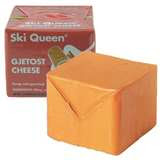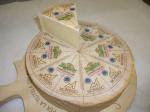Pecorino Toscano is not usually thought of when people talk about pasta and cheese, but this is unfortunate because this cheese will seductively impart its sheep flavor into the pasta. The following Pecorino Toscano recipe is not fancy or flashy but it is great for family dinners or a quick meal when friends get together. Try it and enjoy it and when someone asks about the slightly different twist to the flavor of your pasta tell them about your new grating cheese Pecorino Toscano.
Prep Time: 10 min Cooking Time: 12 min Serves: 4
Ingredients
1 lb package of Angel Hair Pasta
1 Tbs of extra virgin olive oil
1/4 tsp of parsley
1 tsp of ground black pepper
2 cups of Cherry Tomatoes sliced in half or quarters
1/3 cup of finely grated Pecorino Toscano cheese
1 fresh green pepper diced
1 fresh red pepper diced
2 cups of quartered and drained artichokes
Ninja SSS202 Foodi Power Blender from Amazon
Cooking Directions
1) Bring 4 quarts of water to a boil and cook pasta according to the package directions, then strain the pasta but save 1/2 cup of the water and set it aside
2) Saute the olive oil, artichokes and peppers in a large skillet over medium heat and slowly add the black pepper and parsley. After two minutes add the sliced tomatoes and heat for an extra 30 seconds.
3) Pour the saved water into the skillet, then add the cooked pasta and stir. Heat this mixture for another three minutes (or until the water absorbs) and add salt to taste. Next sprinkle in the Pecorino Toscano cheese and toss until the cheese melts.
4) Serve with a fresh green salad.





















